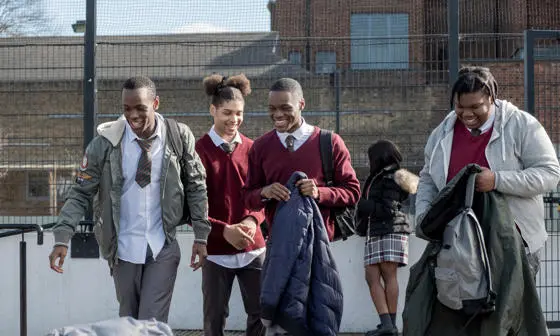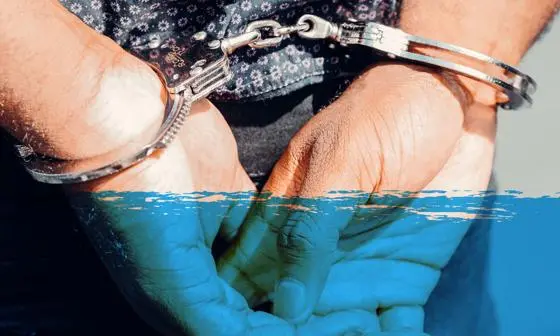Music on trial: challenging the use of rap as evidence in criminal courts

Contents
Rap and hip hop have never been more popular. In recent years, the genres have accounted for over a fifth of singles in the UK charts. However, below the surface of this mainstream success and popularity, there are increasing concerns around its use by police and prosecutors in criminal trials.
Dr Abenaa Owusu-Bempah, Associate Professor of Criminal Law and Criminal Evidence at LSE, is part of the Prosecuting Rap network of UK scholars, youth workers, journalists and industry insiders who are interrogating how rap is being used in our courts.
In a paper published this year, Dr Owusu-Bempah produced her findings on a review of over 30 appeal judgments reported between 2005 and 2020 in England and Wales. "We are seeing, and case law is showing, that this form of youth culture and expression is being used as evidence in court to prove acts of criminality - including murder, serious assault and firearms offences," she says.
"And while there are some cases involving defendants of other races and ethnicities, mostly we're seeing lyrics and music videos used as evidence against young, male, Black defendants who are from urban areas, in particular, London.
"So, the material is being used against the same kind of people, to prove the same kind of issues, in the same kind of cases. For the police and prosecutors to rely on this ready formula, that they know will help secure convictions, is extremely problematic – it is wrong, and it needs to be reformed."
Pieces of performance art [are] being used against an individual, so what can be a very positive creative endeavour becomes used as evidence of criminality and of bad character.
Rap presented in criminal trials
Dr Owusu-Bempah’s findings demonstrate that rap lyrics and participation in rap music videos are often presented as evidence of a disposition of the defendant to the behaviours linked to the crime, known as "bad character evidence", as laid out in the Criminal Justice Act 2003.
She explains: "Lyrics and participation in music videos are used to demonstrate ‘reprehensible behaviour’, but the probative value of rap music is clearly very weak, and the music is very rarely directly connected to the crime charged.
"For example, in the case of R v Sode [2017] EWCA Crim 705, a defendant had appeared in a rap video when he was 14 years old. In the video, he made gestures and remarks said to demonstrate support for a particular gang. These gestures and remarks were used as evidence of gang affiliation, which then formed the motive for a murder which would happen two years later."
While there have been challenges to this practice in the Court of Appeal, the success rate is extremely low. In fact, of over 30 cases analysed in the study, there was just one successful challenge to a conviction:
"In R v Alimi [2014] EWCA Crim 2412, the defendant had been convicted of firearms offences. Only at appeal was it acknowledged that the defendant’s presence in the background of two music videos did not show gang membership, as the prosecution had suggested it did."
As part of Dr Owusu-Bempah’s work in this area, she is instructed as an expert witness to trials to demonstrate that rap music is unreliable as evidence of criminality. In one of her most memorable anecdotes, she recalls: "I was contacted by a barrister about a case where the prosecution wanted to rely on images from a music video where the defendant was giving gun fingers at the camera for an offence related to possession of a firearm.
"This approach from police and prosecution might appear shocking, but it is working for them."
Biases and race
Evidence of engagement with rap music becomes part of a powerful picture - a young, Black man or boy from an inner-city area can then fit the image of what we're told gang members look like and sound like…and therefore must be involved in that world.
This treatment by courts of mostly young, Black men and boys also raises questions about race and the role of biases in the way these cases are handled.
For example, where 23 of the cases in the study were said to be gang related, it is difficult not to draw comparisons with the ongoing scrutiny of the Metropolitan Police Service’s Gangs Violence Matrix, where Black people are represented at almost 80 per cent; or to raise that in the most recent government statistics for England and Wales, Black prisoners were disproportionately represented across all younger age groups, making up 21 per cent of all prisoners aged under 25.
On this backdrop, Dr Owusu-Bempah explains how rap is incorporated into building a picture of a defendant in court:
"Police and prosecutors have easy access to lyrics and music videos through phones, social media and YouTube. Alongside lyrics and videos, a case may be built with social media posts, cell site evidence, or other items of circumstantial evidence which link defendants to each other or to a ‘gang’. This can then be used to suggest they have a criminal disposition or that co-defendants had a joint motive or intention.
"So, evidence of engagement with rap music becomes part of a powerful picture - a young, Black man or boy from an inner-city area can then fit the image of what we're told gang members look like and sound like; the defendant is rapping about a supposed gang or throwing signs, using provocative or aggressive language, and therefore must be involved in that world and must be linked to the offence.
"There is no requirement that anyone explain to the jury the culture, artistic conventions or social influences on rap music. Without context, I don’t see how defendants can be protected against undue prejudice."
[Prosecutors] are conflating art with character in a way that would be unthinkable with other art forms.
Literal vs figurative interpretations of rap
With its often-explicit depictions of violence and crime, Dr Owusu-Bempah notes that the rap subgenre UK drill has been the focus of much of the attention around the use of rap in criminal trials.
"Yet, there is very rarely a connection between the lyrics or the videos, which tend to be formulaic and generic, and the offence," she says. "These are also pieces of performance art being used against an individual, so what can be a very positive creative endeavour becomes used as evidence of criminality and of bad character.
"Furthermore, we don’t see other genres of music being used in the same way. We don’t see the production of graphic crime novels, violent plays or films, or even violent video games being held to the same standards.
"This genre of music is rich in figurative language, metaphors, symbolism and exaggeration. So, why are prosecutors asking courts and juries to take rap music literally? They are conflating art with character in a way that would be unthinkable with other art forms.
"Rap lyrics and videos should not be taken at face value."
The bigger picture
While Dr Owusu-Bempah’s research has focused on the use of rap in courts in England and Wales, her participation in the Prosecuting Rap network has brought her into contact with colleagues further afield.
"I’m in touch with experts from the US, Germany, France and the Netherlands. The US has a longer history with policing rap music, and we’re noticing now that wherever there are drill scenes, there tends to be the same issues with policing and prosecuting.
"Our work raises awareness about the extent to which police and prosecution are relying on evidence, which is often not relevant, not reliable and is unduly prejudicial. Legal systems need to either come up with some rules around excluding rap as evidence in courts, or implement much stricter tests for admissibility, such as those being proposed in the US.
"Currently, despite the commercial successes of rap music we see in the charts, for creators, particularly for young, Black men and boys, these aspects of popular Black and youth culture are essentially being criminalised."
Dr Abenaa Owusu-Bempah was speaking to Molly Rhead, Media Relations Officer at LSE.
Download a PDF version of this article



